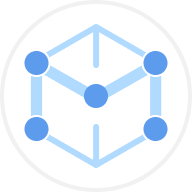Measurable Data Token (MDT) es un proyecto cuyo objetivo es crear una economía de datos que permita a los usuarios compartir, intercambiar y monetizar información a cambio de incentivos. Como economía de datos descentralizada, Measurable Data Token se centra en hacer que el trading de datos sea más ético, basado en el consentimiento y transparente. El exclusivo ecosistema de trading aprovecha la tecnología blockchain para conectar a vendedores y compradores de datos dentro de un ecosistema inmutable.
Qué es Measurable Data Token
Measurable Data Token es un proyecto basado en Ethereum que pretende ayudar a los usuarios a obtener la compensación adecuada por los datos que comparten con los compradores. Se centra en eliminar a las empresas que aprovechan los datos de los usuarios para obtener beneficios. El proyecto pretende cambiar el status quo devolviendo el poder a los usuarios.
El intercambio de datos se recompensa mediante tokens MDT, una medida que promueve una distribución más justa y fomenta el valor del token nativo.
El equipo del Token de Datos Mensurables
Heatherm Huang, cofundador de MailTime, ideó el proyecto del Token de Datos Mensurables. Huang también creó la Fundación Measurable, empresa responsable del mantenimiento del MDT. Aparte de él, el equipo de la Measurable Data Token también cuenta con numerosos expertos en blockchain y minería de datos, como el ingeniero de software Wing Chan, el ingeniero de software sénior Matt Lung y otros.
¿Cómo funciona Measurable Data Token?
Measurable Data Token se basa en la transparencia. Los compradores de datos realizan solicitudes a prueba de manipulaciones a través de la blockchain. Los proveedores de datos invocan puntos de datos específicos de sus repositorios, como si fueran billeteras de datos, utilizando su clave pública y los envían a los compradores. Los compradores sólo tienen acceso a los datos que el vendedor desea compartir.
Los contratos inteligentes específicos del ecosistema gestionan las condiciones especificadas para todas las transacciones relacionadas con los datos. Los detalles del contrato inteligente incluyen las dimensiones de los datos, la clave pública del usuario, el porcentaje de recompensa, etc. El pago de los datos sólo se realiza cuando se cumplen las condiciones del contrato inteligente y se liberan las recompensas según el código.
El token nativo de Measurable Data Token: MDT
MDT es el token nativo del ecosistema Measurable Data Token. MDT es un token ERC-20 compatible con la mayoría de las billeteras frías y calientes. Los tokens tienen un tope de oferta de 1.000 millones, asignados como incentivos y recompensas. Como hay un hard cap en el suministro, se espera que el modelo económico del token pase de desinflacionista a deflacionista, ya que es habitual que algunos tokens se pierdan entre las billeteras.
Casos de uso de la MDT
MDT es un componente esencial del ecosistema de tokens de datos medibles. Su principal caso de uso es recompensar a los usuarios por compartir datos, funcionando esencialmente como una forma de pago. Por ejemplo, los tokens MDT incentivan a los usuarios que venden sus datos a empresas de juego y de otro tipo para ayudarles con el análisis de mercado.
Además, los tokens MDT tienen otros casos de uso, como la capacidad de facilitar las transacciones de datos dentro del ecosistema, un papel en la gobernanza de la plataforma y la capacidad de obtener recompensas por hacer staking ofreciendo liquidez basada en MDT.
Distribución de MDT
Los tokens MDT se distribuyen de la siguiente manera
- 24 % al equipo de MailTime
- 11 % a los asesores y primeros inversores
- 15 % al fondo de crecimiento
- 35 % para eventos de distribución de tokens como airdrops
- 15 % para la preventa
Measurable Data Token (MDT) y el futuro de la economía impulsada por blockchain
Los mercados de datos son cruciales porque permiten a los usuarios conectar con las empresas, ayudándoles a comprender mejor los mercados. Pero el proceso actual está muy centralizado. Measurable Data Token pretende cambiar todo eso ofreciendo un mercado de datos descentralizado lo suficientemente innovador como para transformarse en una nueva economía.


















